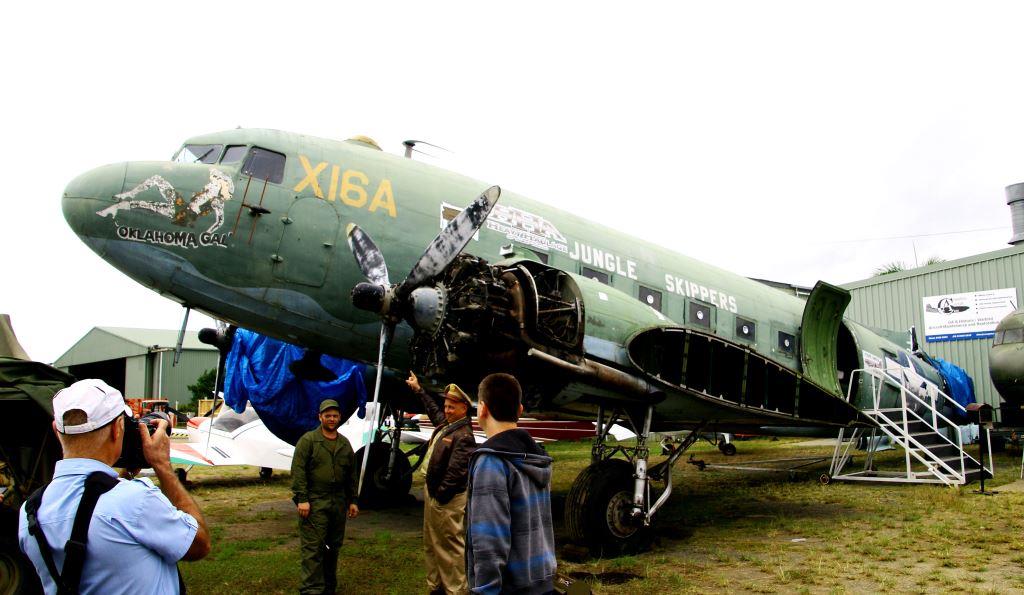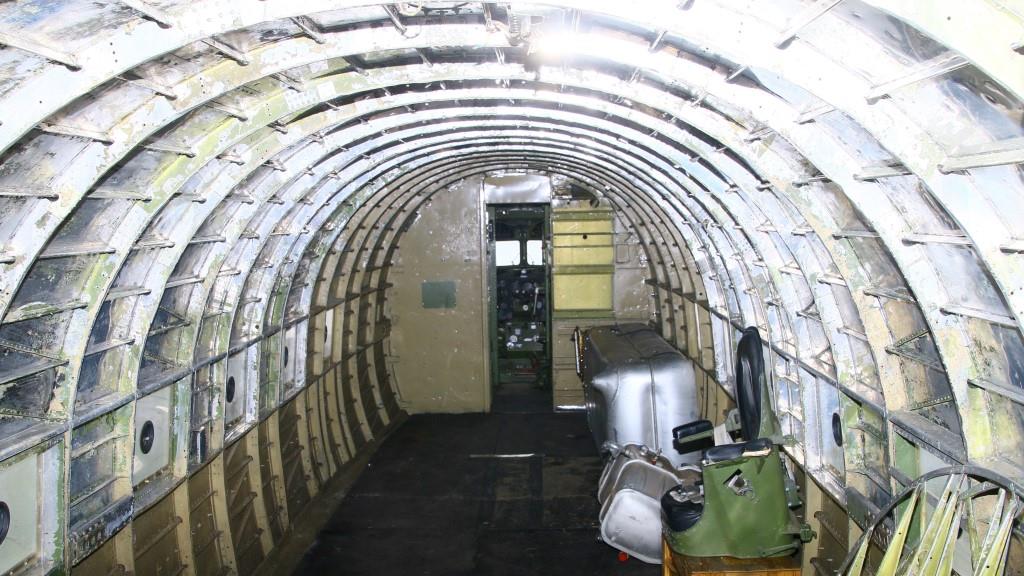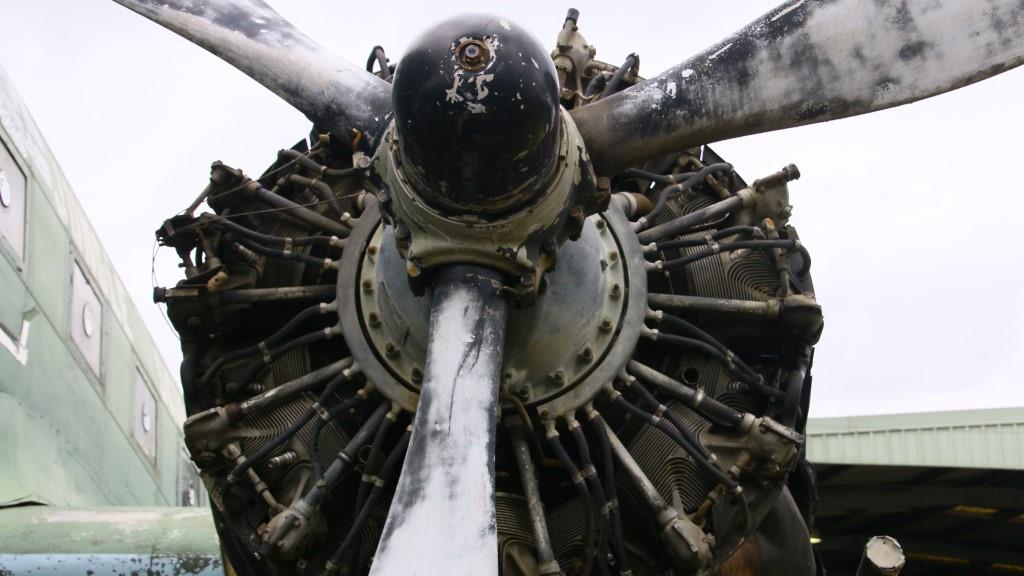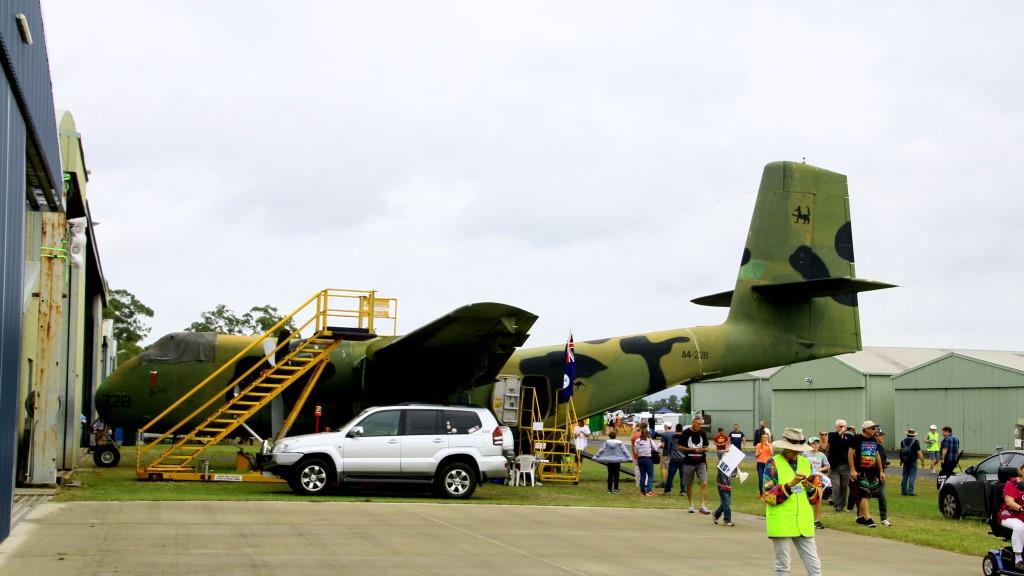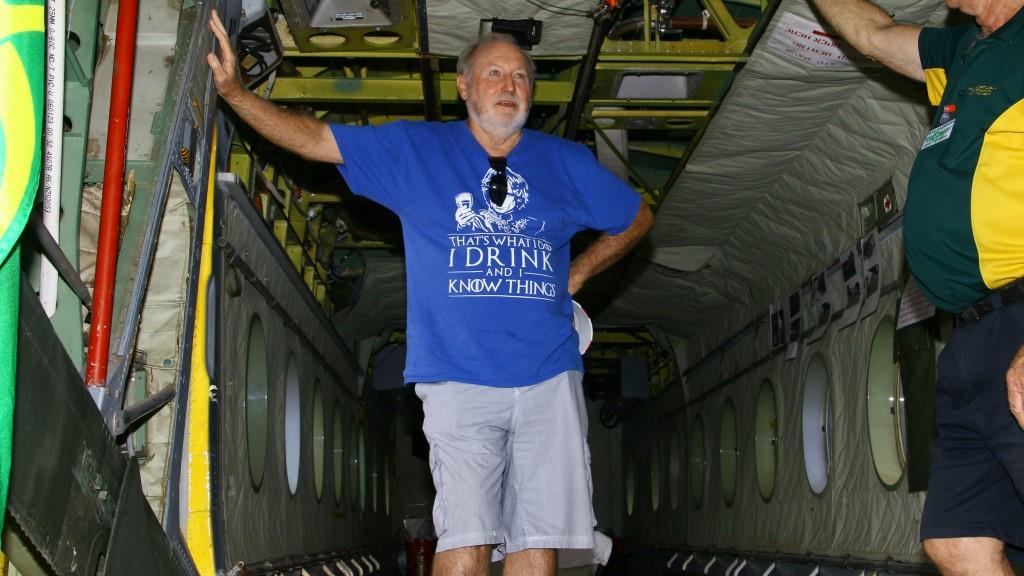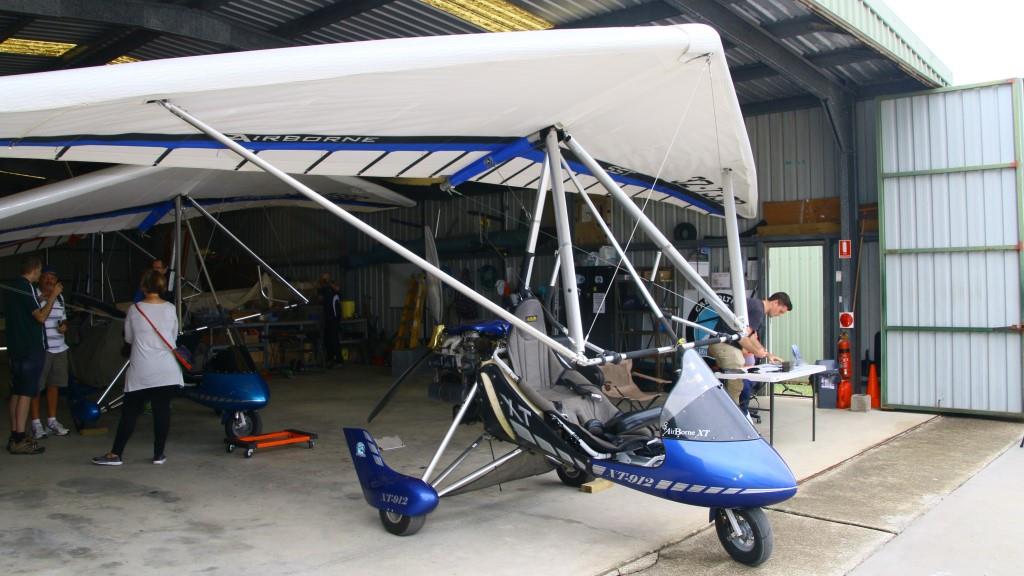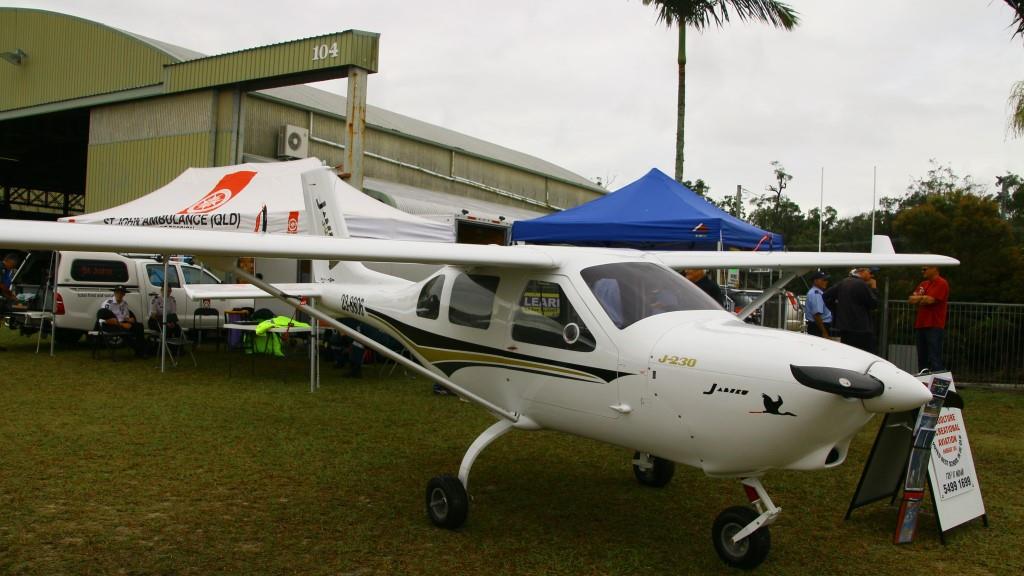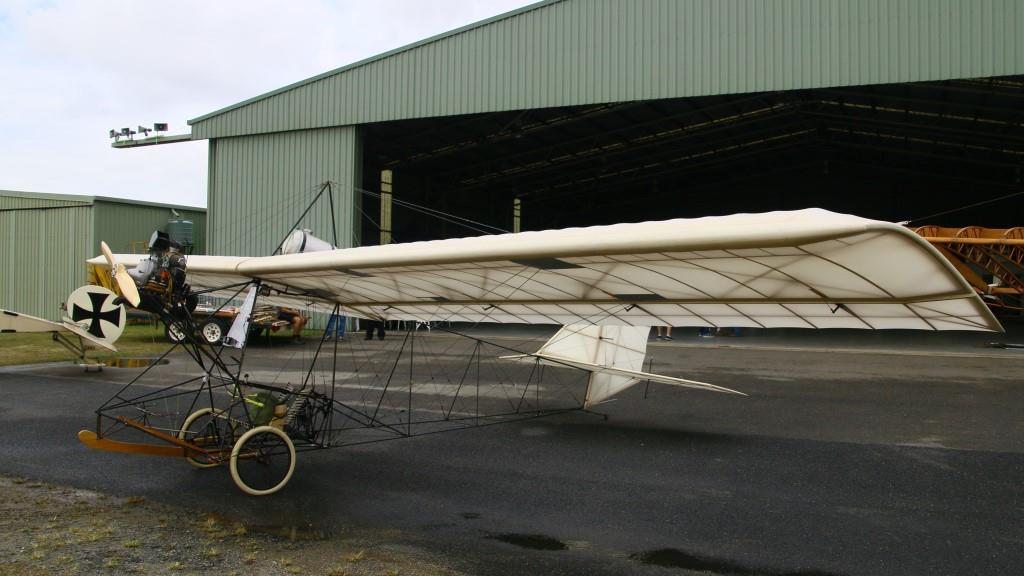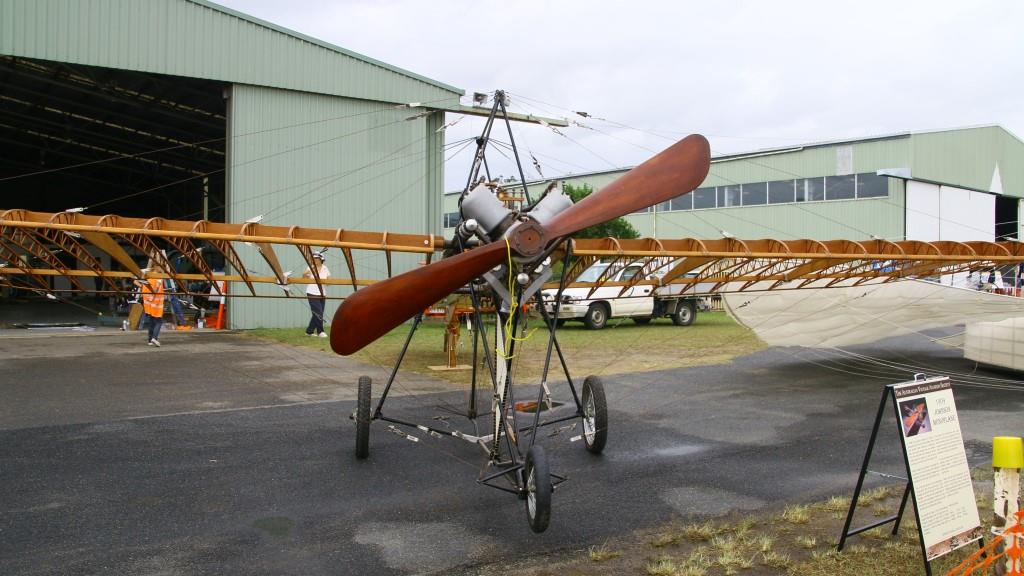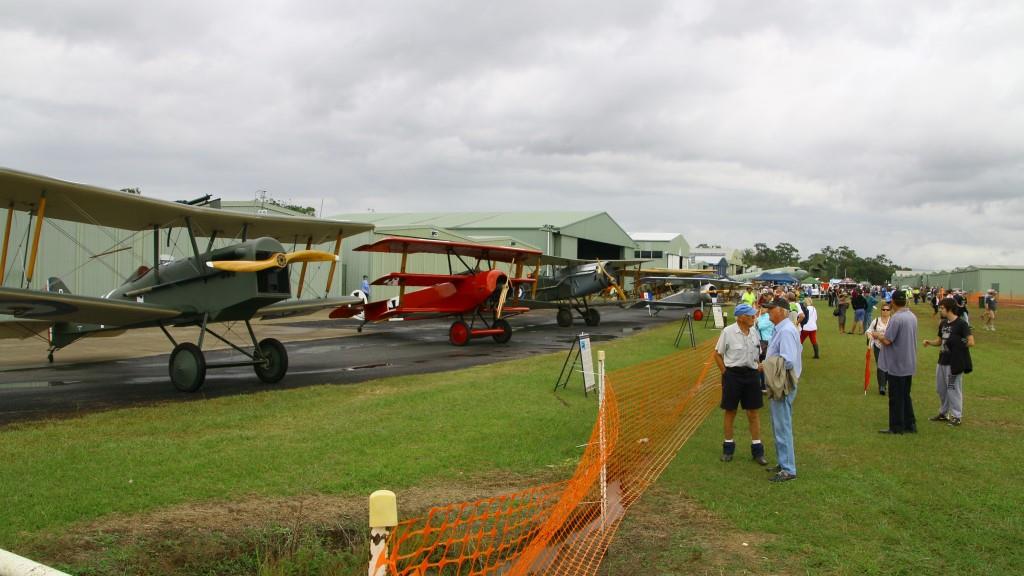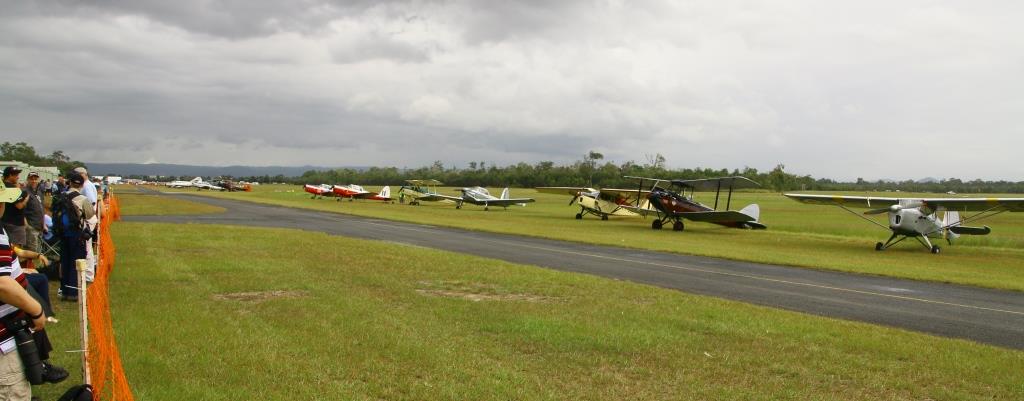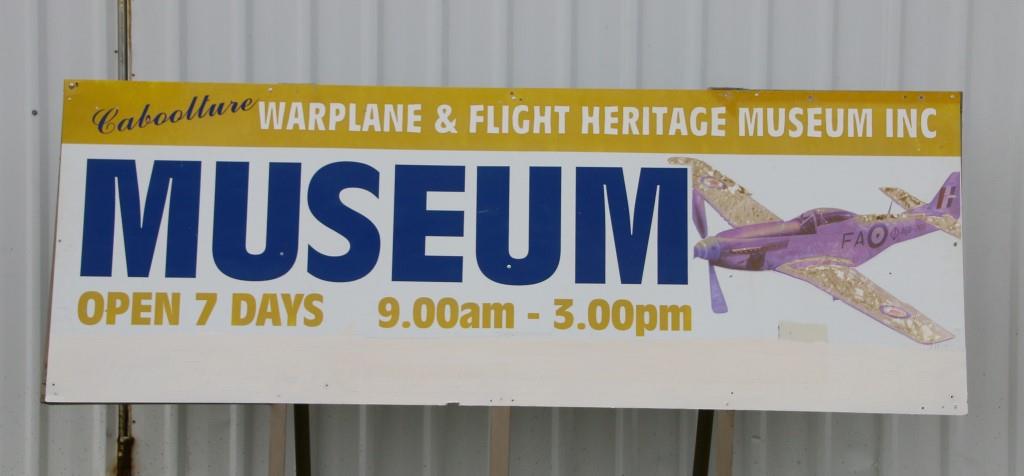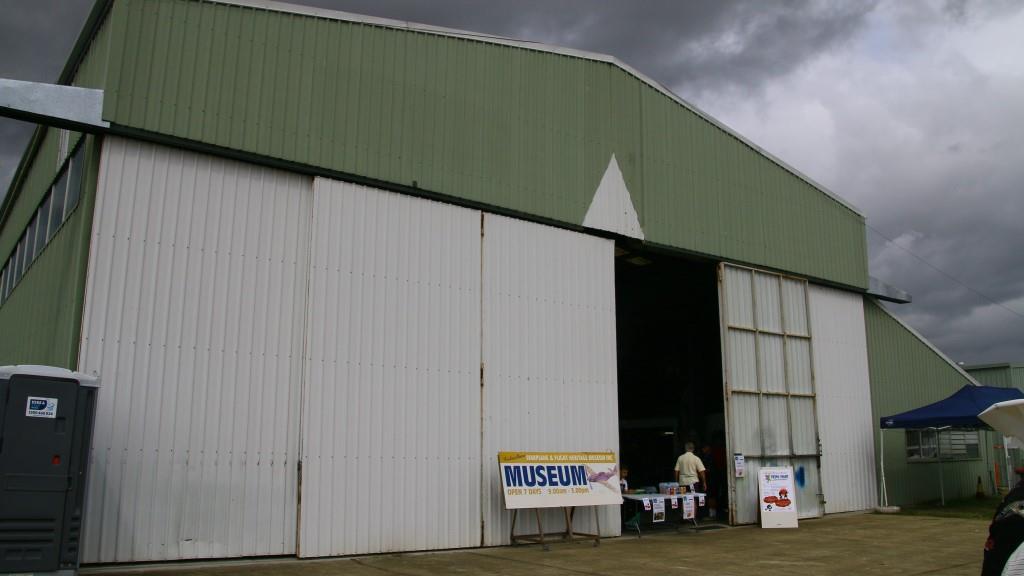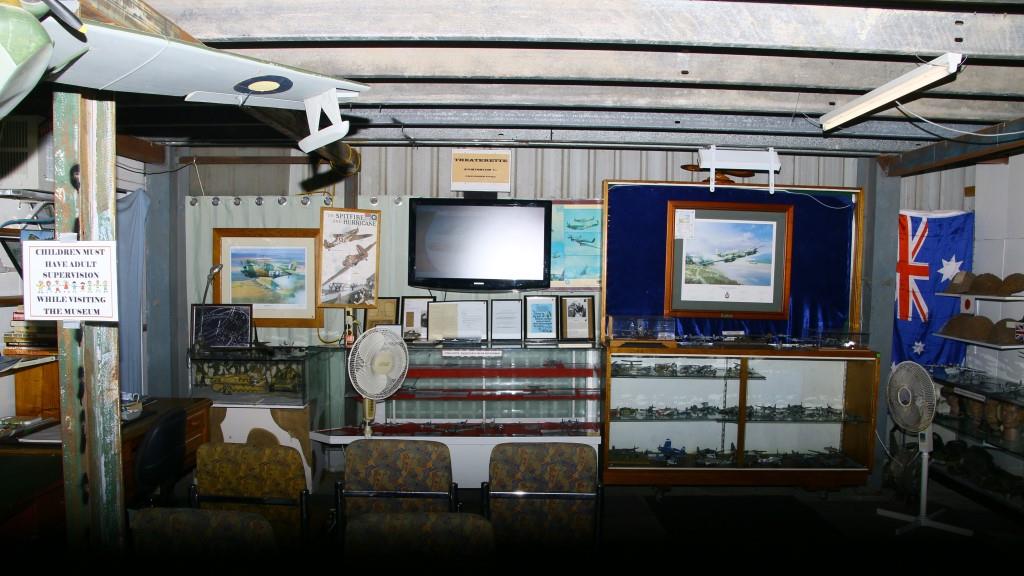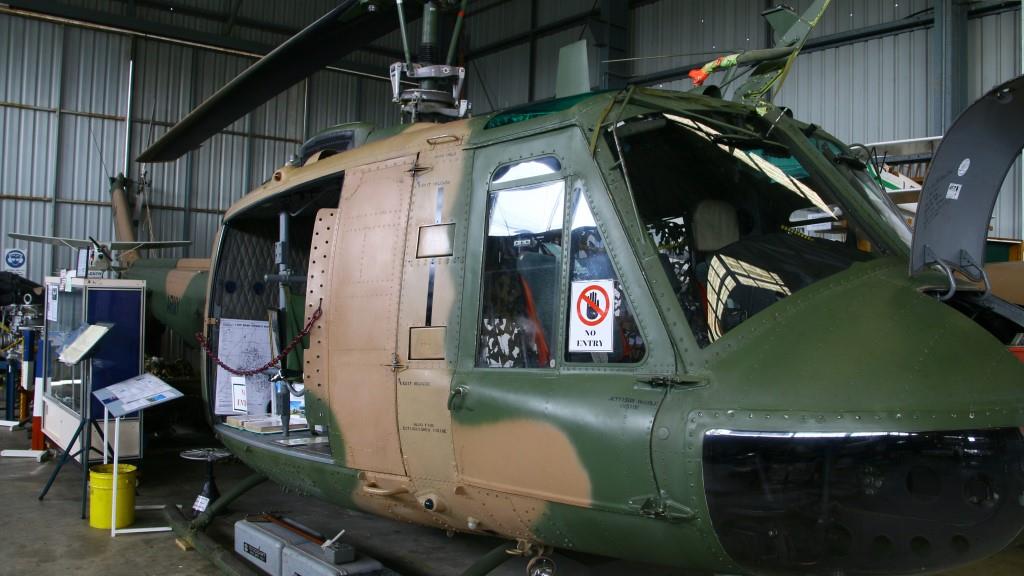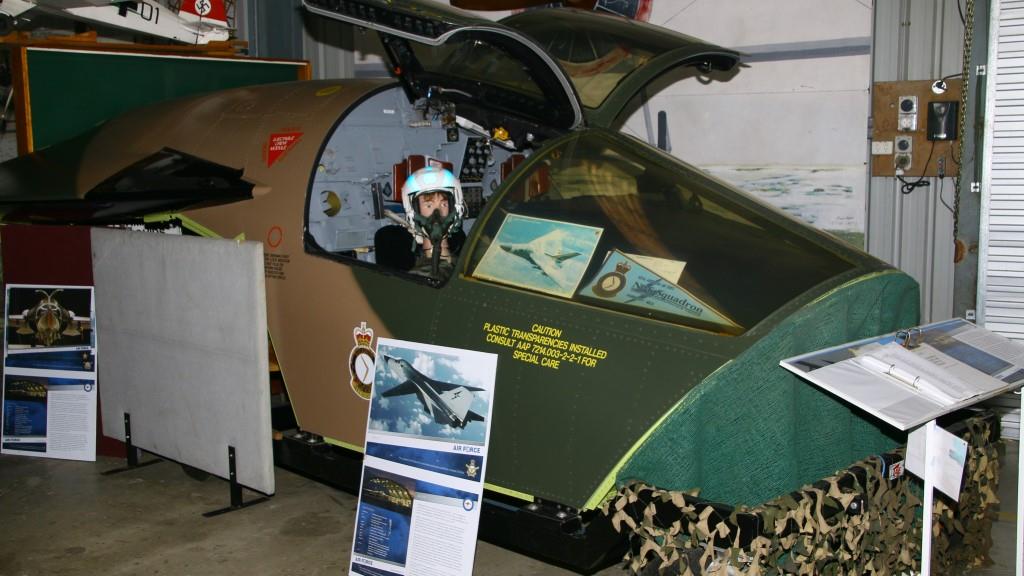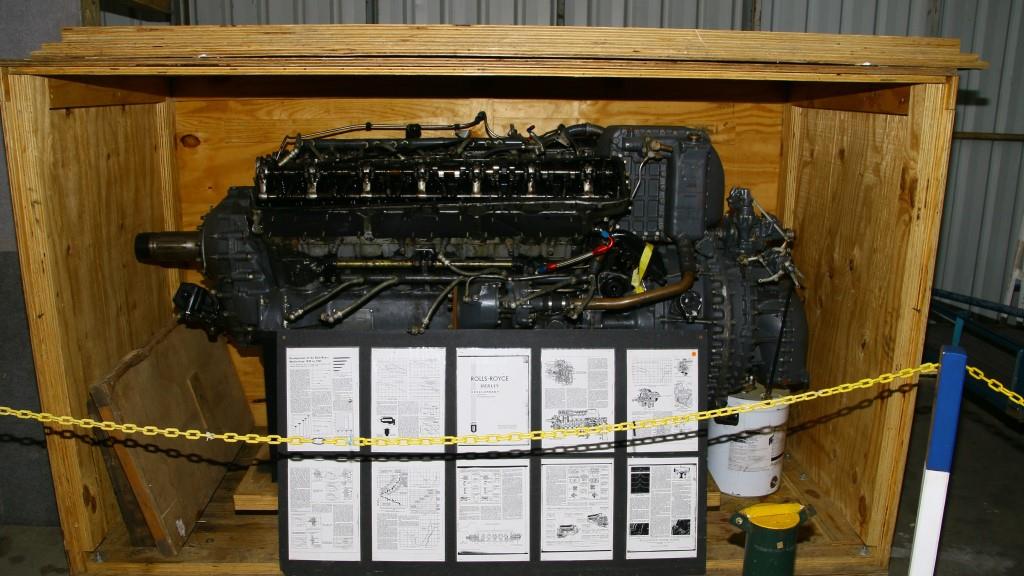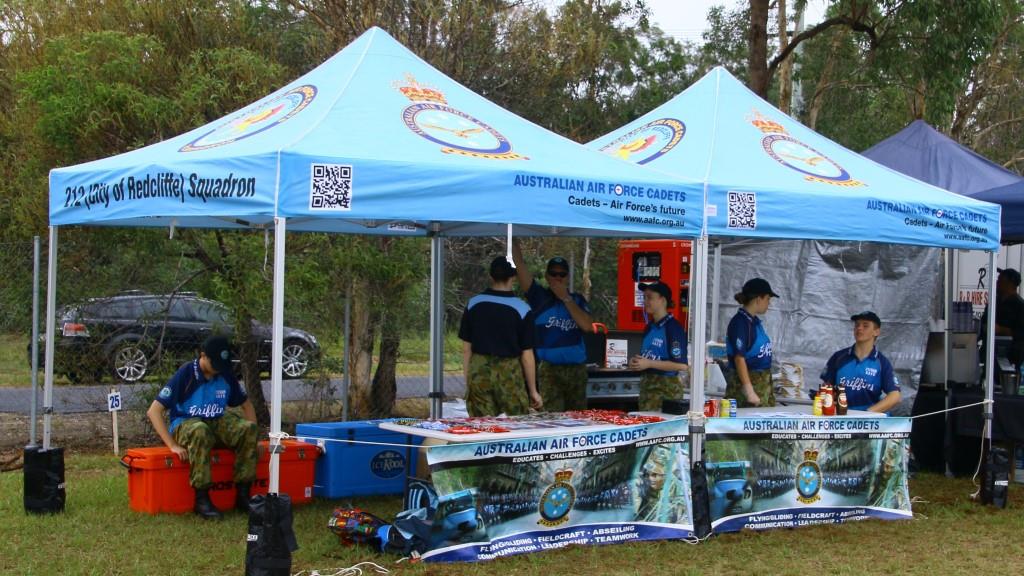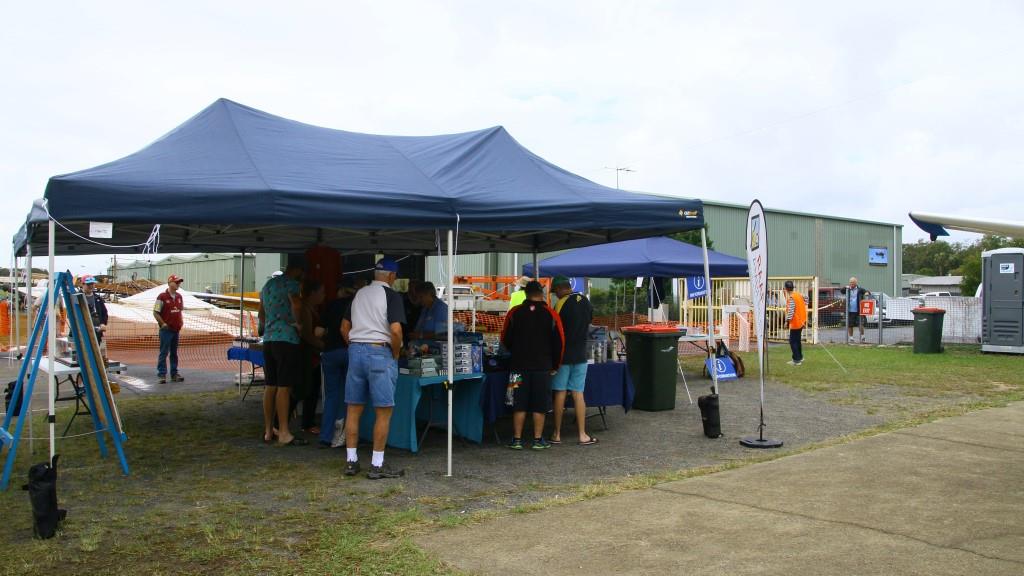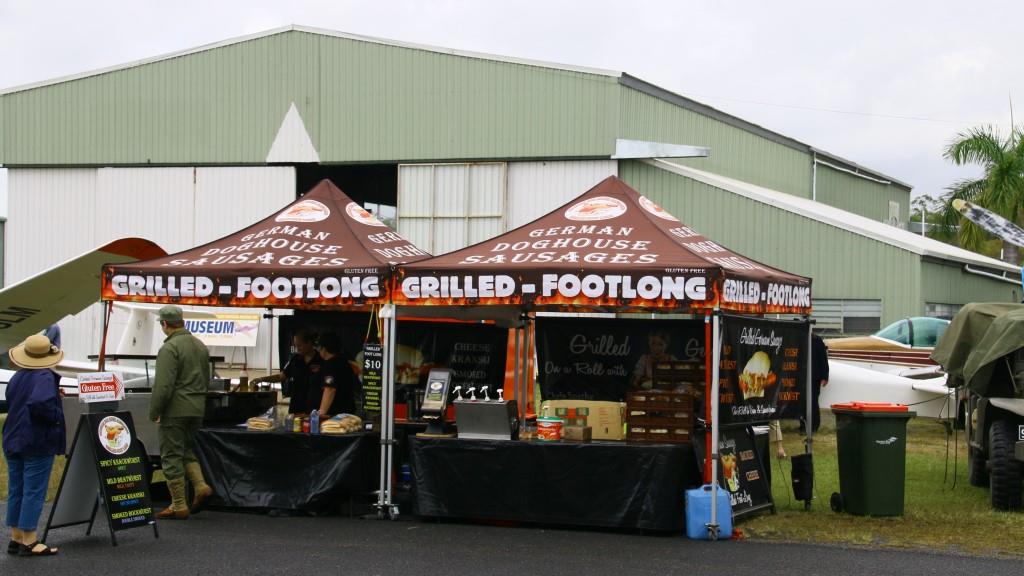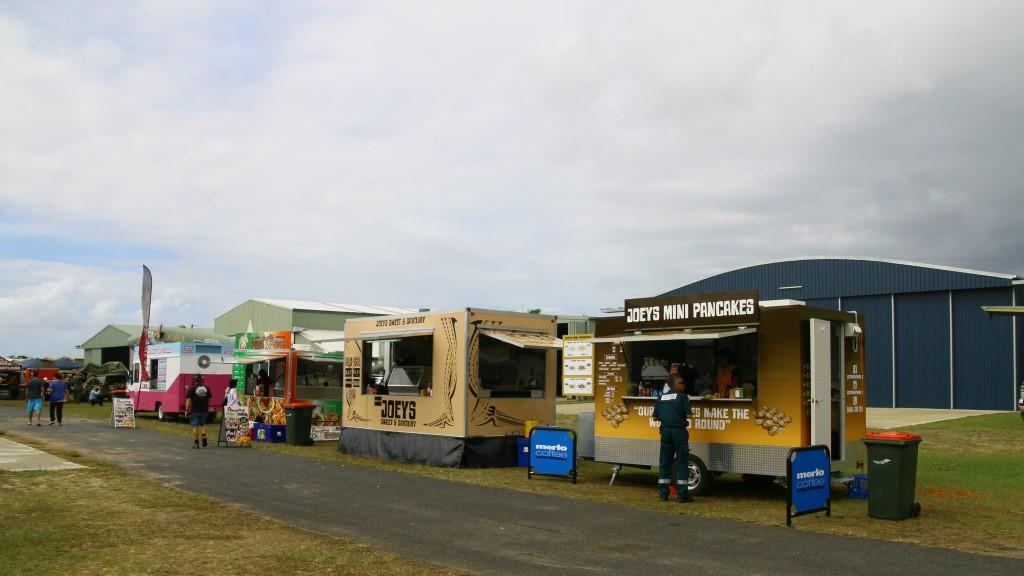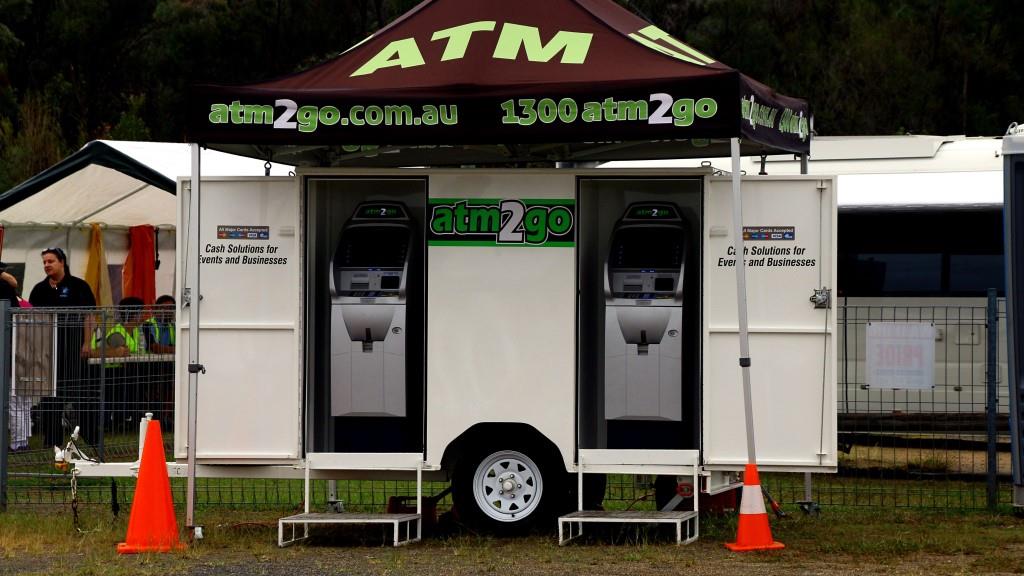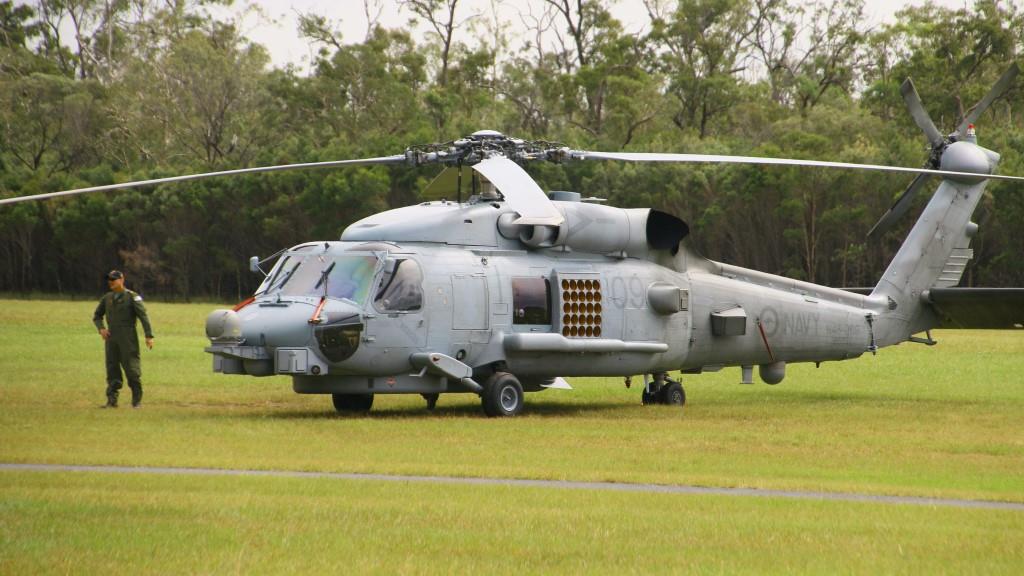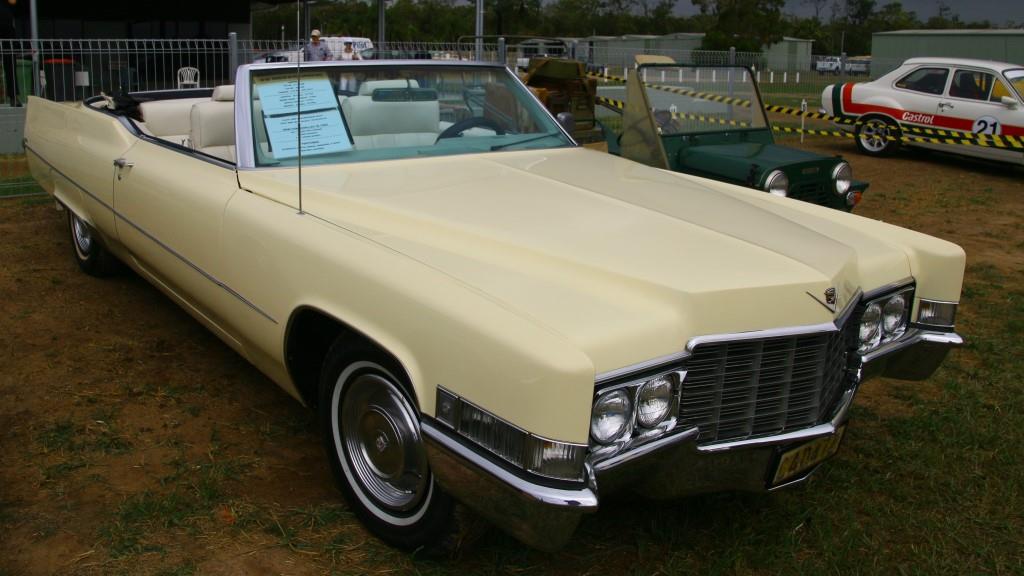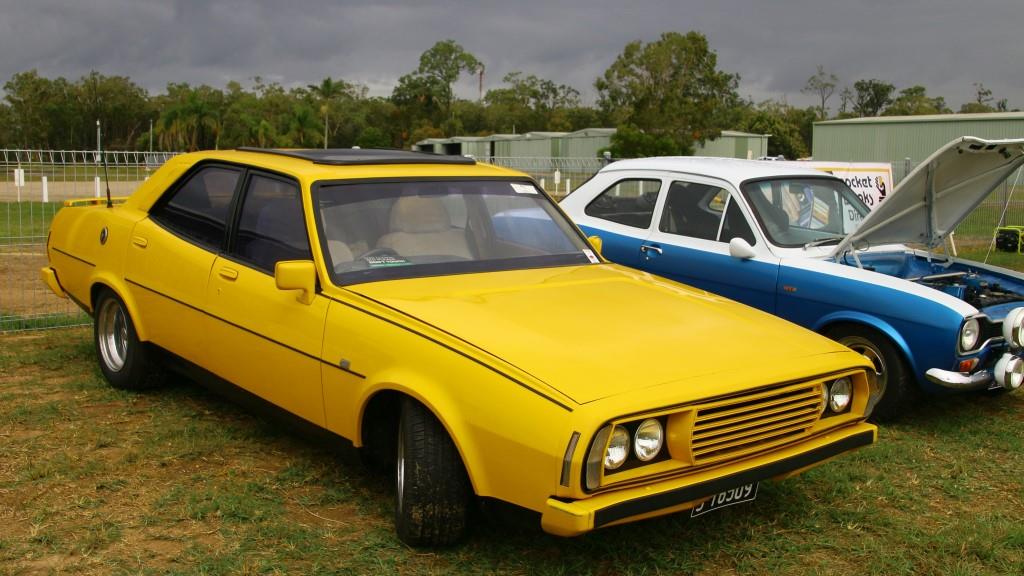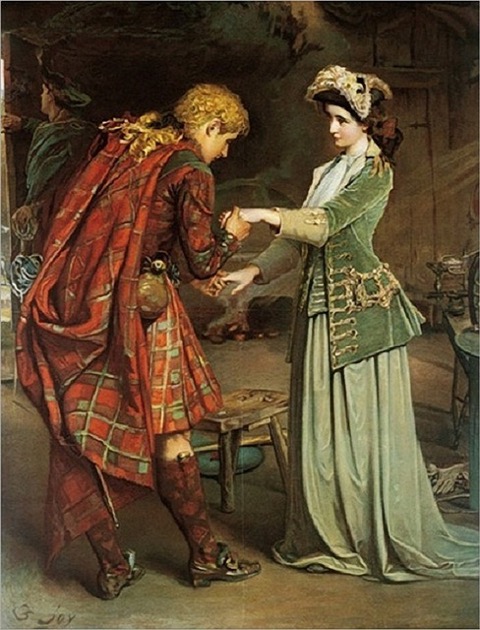|
|
||||||||||||||||||||
|
||||||||||||||||||||
|
Privacy Policy | Editorial Policy | Profit Policy | Join the Association | List of Members | Contact us | Index | Links |
||||||||||||||||||||
|
Back Go to page: 1 2 3 4 5 6 7 8 9 10 11 12 13 14 15 16 17 18 19 20 Forward
|
||||||||||||||||||||
|
|
||||||||||||||||||||
|
Caboolture Air Show 22 – 23 Apr 2017.
Over the weekend 22-23 April, “The Australian Vintage Aviation Society” (TAVAS), which is based at the Caboolture Airport, held their second 'annual' airshow. The airport at Caboolture is an easy 30 minute drive north of Brisbane and is adjacent to the Bruce Highway. It is held by lease from the Queensland Government by the Caboolture Aero Club. The Moreton Bay Regional Council acts as custodian of the land on behalf of the Queensland Government and since its inception, the Caboolture Aero Club has operated the site. The current lease arrangement for the airfield land is due to expire in 2034. Since 1990, the Brisbane Valley Gliding Club also began operating from the airfield, changing its name to the Caboolture Gliding Club in May 1991 and then establishing its main base at Caboolture.
|
||||||||||||||||||||
|
|
||||||||||||||||||||
|
As well as the Gliding Club, several other flying clubs also are based at the airfield, including Caboolture Microlights, Airwork Helicopters, Aero Dynamic Flight Academy and Caboolture Recreational Aviation.
In addition to general aviation, recreational and flight training operators, the airport is a popular facility for the servicing and restoration of vintage aircraft. A number of organisations operate from Caboolture, including the Beaufort Restoration Group, TAVAS and Complete Aircraft Care. Currently, TAVAS' collection includes a P-51D Mustang, a North American Aviation T-6 Texan (SNJ) and Winjeel as well as a French built World War I Nieuport 17 fighter. The Winjeel was caught in floods near Lismore and is currently displaying a U/S tag. The airfield is also home to the Caboolture Warplane and Heritage Museum. which displays aviation memorabilia and aircraft engines.
|
||||||||||||||||||||
|
|
||||||||||||||||||||
|
|
||||||||||||||||||||
|
|
||||||||||||||||||||
|
|
||||||||||||||||||||
|
|
||||||||||||||||||||
|
The airfield has two grass runways, both of which operate with a displaced threshold to allow landing aircraft to sufficiently clear the Bruce Highway and local roads. The primary strip is aligned 12/30 which has an available landing distance of 1,210m (3,970ft). A short sealed 250 metre area exists on the threshold of runway 12. A secondary strip aligned 06/24 has an available landing length of 821m (2,694ft). Use of runway 24 is generally discouraged due to the proximity of Caboolture Hospital on runway heading. Aircraft refuelling is available.
Caboolute is a non-controlled airfield, pilots are required to self co-ordinate aircraft movements using a Common Traffic Advisory Frequency (CTAF). The nearest radio navigation aid for aircraft is the Brisbane VOR/DME installation which is 18.9 nautical miles (35.0km) to the south.
While the airport charges no landing fees for visiting aircraft, a number of hazards exist which make Caboolture challenging for pilots who are unfamiliar with the facilities. Significant bird and wildlife hazards exist on the runways, due in part to the airfield not being fenced and in close proximity to a landfill site. During periods of heavy rain, the unsealed taxiways are prone to becoming waterlogged with the possibility of aircraft becoming bogged.
|
||||||||||||||||||||
|
|
||||||||||||||||||||
|
Last year (2016) TAVAS held its inaugural airshow at the Caboolture Airport and following the success of that event, it was decided to make it an annual event. This year, gates opened at 9.00am on Saturday and unfortunately due to the heavy rain early in the morning, the numbers were down early in the day but as the weather improved the numbers began to swell. The weather cleared perfectly on the Sunday (it is Queensland!!) and when doors closed late that day, a total of 10,000 had enjoyed the show.
The two large aircraft on display were a Caribou (A4-228) and a Douglas Dakota C-47A-30-DK, both of which are being restored. The Caribou will remain a static display but it is intended to return the C-47 to an airworthy condition, in full service configuration, as a flying memorial to the service of those who flew in WW11 in the type.
The C-47 is a militarised version of the DC-3, the differences include being fitted with a cargo door, hoist attachment, strengthened floor, as well as a shortened tail cone for glider-towing shackles. It also has an astrodome in the cabin roof. Most C-47’s have had a very fascinating career, this particular aircraft was manufactured by the Douglas Aircraft Corporation and construction was completed at the Oklahoma City plant in 1943. It carried the tail number 43-48234 in USAAF service and was assigned to the Pacific theatre of operations during the war with U. S. Transport Command. The RAF began calling this aircraft a “Dakota” as most of them were produced in that American State. The Americans never called theirs a Dakota.
The aircraft is known to have served with the 5th Air Force in Australia
and the Pacific including time in Papua New Guinea (PNG) and the
Philippines. It also served in Korea and the Pacific, post war and was
eventually disposed of in 1947 when it was sold to the Australian
Government and moved from Manila to Australia becoming VH-DMV, and
registered to the Department of Civil Aviation. Due to a registration
policy change, VH-DMV was re-registered a
On the 10th March, 1962, VH-CAO was sold to Brain & Brown Air Freighters and re-registered as VH-BAB. Work was then done to convert the aircraft to freighter configuration and it then operated as such until it was cancelled from the register in 1972 and overhauled.
In February 1975 it returned to the Australian civil register as VH-BAB and in November 1976 it was sold to Air Express Holdings and flew until withdrawn in 1979 when it was sold to the Chewing Gum Field Aircraft Museum, in Tallebudgera, Queensland. When that museum closed it went to Drage's Air World at Wangaratta, Victoria, and when the latter folded it was sold at auction and moved to Mareeba, QLD.
On 17 December 2014 VH-BAB arrived at Caboolture by road from Mareeba to begin its restoration to airworthy condition. The aircraft is now owned by Pacific Dakota Restorations and once airworthy, will be flown around the country as a flying memorial to those who fought in WW2 and will be used extensively for education work, inspiring people to believe in their dreams and allow people to get close to a piece of history.
Pacific Dakota Restorations would welcome anyone who is able to assist with any information on this fantastic aircraft. If you know anything, please contact them at www.pacificdakotarestoratons.com/contact-us. It is vital that any and all historic information and photographs of Douglas C-47A-30-DK are gathered now before it is lost.
|
||||||||||||||||||||
|
|
||||||||||||||||||||
|
|
||||||||||||||||||||
|
|
||||||||||||||||||||
|
|
||||||||||||||||||||
|
|
||||||||||||||||||||
|
The other large aircraft on display was the Caribou, A4-228.
|
||||||||||||||||||||
|
|
||||||||||||||||||||
|
This particular aircraft arrived at 38Sqn at Richmond in June 1965. It was sent to Det A in Moresby in 1973 and took part in trials to ascertain the absolute maximum single engine ceiling performance before returning to Richmond. In 1993 it collided with a tree while practicing a STOL at Noosa, damaging its left wing. It was repaired and continued on strength with 38Sqn until 2009 when it was moth-balled and stored at the Oakey Army Base, just out of Toowoomba.
In 2015 it was sold by tender to the Australian Aviation Heritage Centre when it was dismantled by a bunch of eager volunteers, loaded onto 3 large trucks and transported to Caboolture, where it was put back together again.
|
||||||||||||||||||||
|
||||||||||||||||||||
|
We spotted Frank Robinson having a nostalgic look over the old girl. Frank flew Caribous with 38 Sqn at Richmond then again in Vietnam with 35 Sqn from May 1970 to June 1971.
|
||||||||||||||||||||
|
|
||||||||||||||||||||
|
And not all the aircraft on display were big - there were some little ones too.
|
||||||||||||||||||||
|
|
||||||||||||||||||||
|
Caboolture Microlights is a recreational flying school based at the airport. They fly weightshift microlight aircraft like the Airborne XT-912 Tourer above (these are known as kites), fixed wing ultralighs and light sport aircraft.
To fly these aircraft you don't need a Private Pilots' Licence of the sort required to fly a conventional aircraft. You must however possess a Pilot Certificate issued by one of the governing bodies of the sport in Australia (RA-Aus or HGFA). You must also be a current member of one of these organisations and your trike must be registered with the same organisation.
There are no minimum hours to fly each year to keep your pilot certificate current but you do have to do a flight check with an instructor every 2 years
|
||||||||||||||||||||
|
|
||||||||||||||||||||
|
Jabiru Aircraft, like the one above, are built by Jabiru Aircraft Pty Ltd which is a fully Australian owned family business located in Bundaberg Queensland. It was founded in 1988 by Mr Rodney Stiff who designed both the Jabiru airframe and Jabiru engine. Exported worldwide, Jabiru Aircraft is one of the leading manufacturers of recreational aircraft in Australia, with over 2000 aircraft and 6000 engines produced to date. The J-230 (above) cruises at 120 knots and burns about 25 litres/hour. (In car terms, that's 11.3 litres/100klm). You can buy the aircraft in kit form for $85,600.
The Jabiru range of aircraft is popular with the recreational flyer, flight training and cross country flying. With features such as dual controls, in-flight adjustable trim, electric flaps, cabin heat and full featured GPS and EFIS/EMS systems, this aircraft will take you anywhere with ease and comfort.
|
||||||||||||||||||||
|
Other aircraft on display, both static and flying were:
|
||||||||||||||||||||
|
|
||||||||||||||||||||
|
|
||||||||||||||||||||
|
|
||||||||||||||||||||
|
Those two aircraft were lined up in front of the hangars along with the following aircraft that saw service during WW1, Fokker E.III Eindecker, Sopwith Triplane, Nieuport 17, SE5a, Fokker Dr.I Triplane, Bristol F2b Fighter, Fokker DVII and a Fokker D.VIII. All these aircraft were ‘fenced’ off and could only be observed from a distance, it was pretty obvious why.
|
||||||||||||||||||||
|
|
||||||||||||||||||||
|
Out on the grass, just off one of the taxiways, but also fenced off, were the following:
Hawker Demon, C-140, C-195, 1928-designed Pietenpol Aircamper, Mig 17 jet fighter (static), DH Devon, DH Tiger Moth, Auster, Yak 52, T-34 Mentor, T-28 Trojan and a DHC-1 Chipmunk, most of which are airworthy and fly.
|
||||||||||||||||||||
|
|
||||||||||||||||||||
|
The airport is also home to the Warplane and Flight Heritage Museum which is housed in one of the hangars.
|
||||||||||||||||||||
|
|
||||||||||||||||||||
|
|
||||||||||||||||||||
|
|
||||||||||||||||||||
|
The museum, which focuses on WWII aircraft, has an extensive range of displays and exhibits depicting much of Australia’s flight heritage. These include a large range of aircraft engines of various kinds, considerable wartime memorabilia, displays depicting famous aviation accidents and tragedies such as the Stinson rescue and the Lincoln crash at Mt. Superbus.
|
||||||||||||||||||||
|
|
||||||||||||||||||||
|
Like a lot of museums around the country, the Caboolture Warplane Museum is staffed and run by volunteer enthusiasts.
|
||||||||||||||||||||
|
|
||||||||||||||||||||
|
Iroquois A2-484 was delivered to the RAAF in 1970 and served in Egypt from 1976 to 1979 as part of the UN Emergency force II. In 1990 it, along with all Iroquois aircraft, was transferred to the Army and was in service with 171 Sqn.
In 2007 it was mothballed and eventually handed over to the Museum in August 2014.
|
||||||||||||||||||||
|
|
||||||||||||||||||||
|
F-111C (A8-135) was delivered to the RAAF in 1973 and was on strength with 1 Sqn at Amberley. It was retired in 2010 and Christmas tree’d in 2011 with its wings, engines and nosewheel doors fitted to A8-130. The crew module was removed and the rest of the aircraft was buried at Swanbank near Ipswich in Nov 2011. In May 2013, the crew module was delivered, on loan, to the Museum.
A8-130, with the bits from A8-135, was given to the Pacific Aviation Museum in Hawaii, also in 2013.
|
||||||||||||||||||||
|
|
||||||||||||||||||||
|
The V-12, 27 litre, Rolls Royce Merlin engine was first run in 1933. The first aircraft to use the engine was the Fairy Battle, then the Hawker Hurricane and then the Supermarine Spitfire, for which it is most closely associated. It also powered the Avro Lancaster. Production of the engine ceased in 1950 after which 160,000 had been built.
The American Packard company built a version in the US and this engine powered the P-51 Mustang. Packard built 55,000 of these engines.
This pic’s for you Don!!
|
||||||||||||||||||||
|
Admission prices for the museum are:
|
||||||||||||||||||||
|
||||||||||||||||||||
|
You can see a channel 7 video on the Museum HERE and there’s another video HERE.
|
||||||||||||||||||||
|
|
||||||||||||||||||||
|
I can’t believe I forgot to go the gym today. That’s 7 years in a row now!
|
||||||||||||||||||||
|
|
||||||||||||||||||||
|
The Australian Air Force Cadets’ 212 Sqn had a display at the airfield. Apart from providing the mandatory sausage sizzle with cold soft drinks, they had a vast display of promotional material which they gave away to those interested in the Cadet scheme.
If you’ve got a son or daughter, or even a grand-son or grand-daughter, who might be interested in joining the Air Force Cadets – you can get information on the service here www.aafc.org.au
|
||||||||||||||||||||
|
|
||||||||||||||||||||
|
The RAAF at Amberley also had a stand and was busily selling all sorts of memorabilia, games and put together models.
|
||||||||||||||||||||
|
|
||||||||||||||||||||
|
If you were a bit hungry or thirsty, TAVAS made sure there was plenty of food and drink on sale, guaranteed to satisfy all tastes.
|
||||||||||||||||||||
|
|
||||||||||||||||||||
|
And if you turned up with not a lot of cash in the pocket, you were looked after there too.
|
||||||||||||||||||||
|
|
||||||||||||||||||||
|
ATM2GO is the only franchised ATM business in Australia. If you’re interested in one you can get details HERE.
|
||||||||||||||||||||
|
The Navy popped in late in the morning, in one of their Seahawk anti-sub helicopters, but unfortunately, they parked it way out in the middle of the airfield where no-one could get up close and personnel and have a look over it.
|
||||||||||||||||||||
|
|
||||||||||||||||||||
|
And – with all those people and all that food and drink, no problems – TAVAS thought of all those wishing to recycle.
|
||||||||||||||||||||
|
|
||||||||||||||||||||
|
And for those who wanted a break from looking at aircraft, there were some wonderful old classic cars on display.
1968 Cadillac De Ville Convertible.
|
||||||||||||||||||||
|
|
||||||||||||||||||||
|
|
||||||||||||||||||||
|
1974 Leyland P 76. (my pick - tb)
|
||||||||||||||||||||
|
|
||||||||||||||||||||
|
|
||||||||||||||||||||
|
|
||||||||||||||||||||
|
|
||||||||||||||||||||
|
If you live close to Caboolture, and a lot of people do these days, and you would like to know more about TAVAS or perhaps join them and help restore some of their wonderful old aircraft, visit their web site HERE
|
||||||||||||||||||||
|
The thoughtful Scotsman!
|
||||||||||||||||||||
|
|
||||||||||||||||||||
|
|
||||||||||||||||||||
|
A thoughtful Scottish husband was putting on his coat and hat to make his way down to the local pub. He turned to his wee wife before leaving and said, "Maggie - put your hat and coat on, lassie." She replied, 'Aw, Jock that's nice. Are you taking me tae the pub with you?" 'Nay," Jock replied "I'm turning the heater off while I'm oot." |
||||||||||||||||||||
|
|
||||||||||||||||||||
|
|
||||||||||||||||||||
|
|
||||||||||||||||||||
|
|
||||||||||||||||||||
|
|

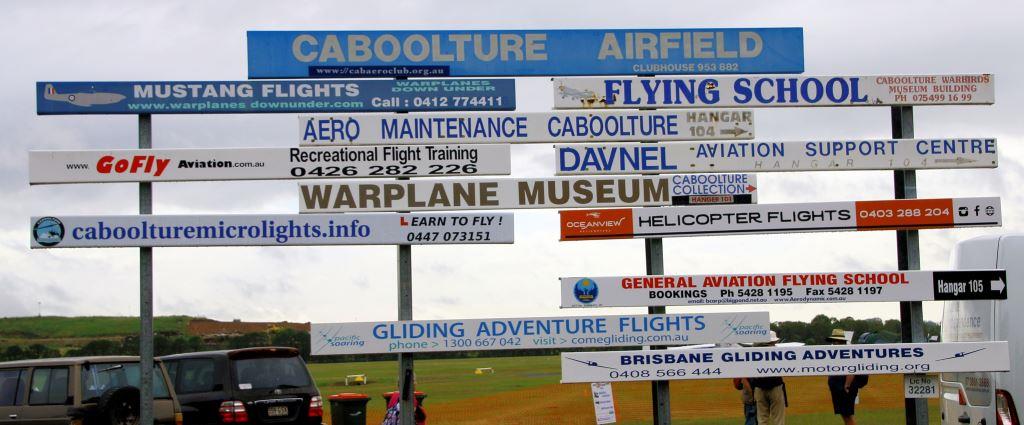
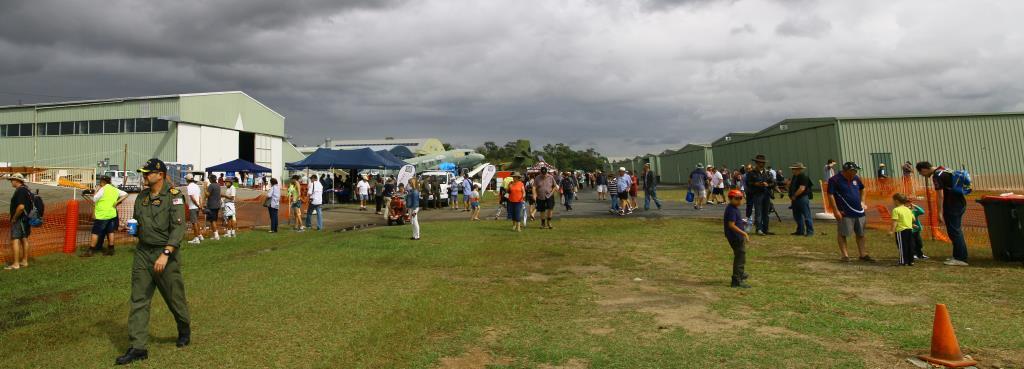
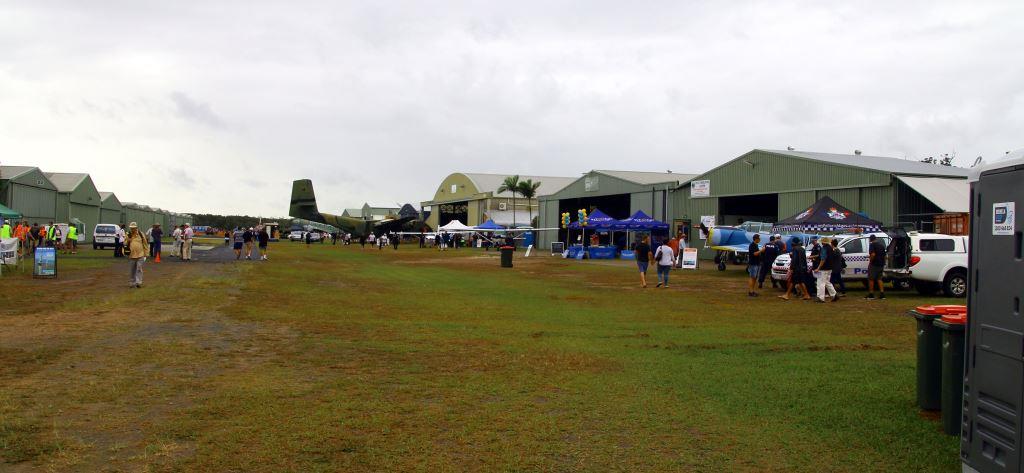


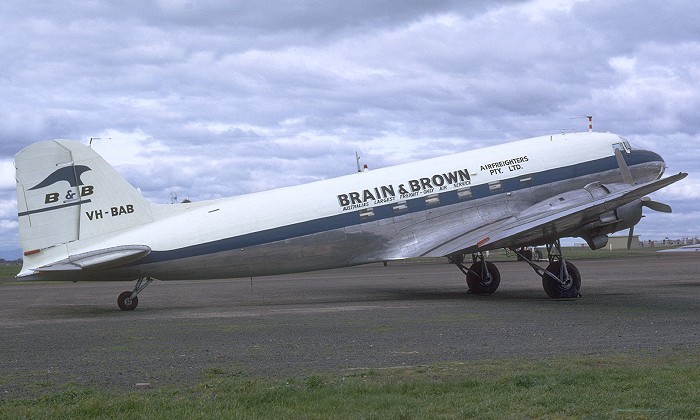 s
VH-CAO on the 9th February, 1951. During service with the
Commonwealth the aircraft was operated and serviced for D.C.A. by Trans
Australia Airlines until March 10, 1962.
s
VH-CAO on the 9th February, 1951. During service with the
Commonwealth the aircraft was operated and serviced for D.C.A. by Trans
Australia Airlines until March 10, 1962.